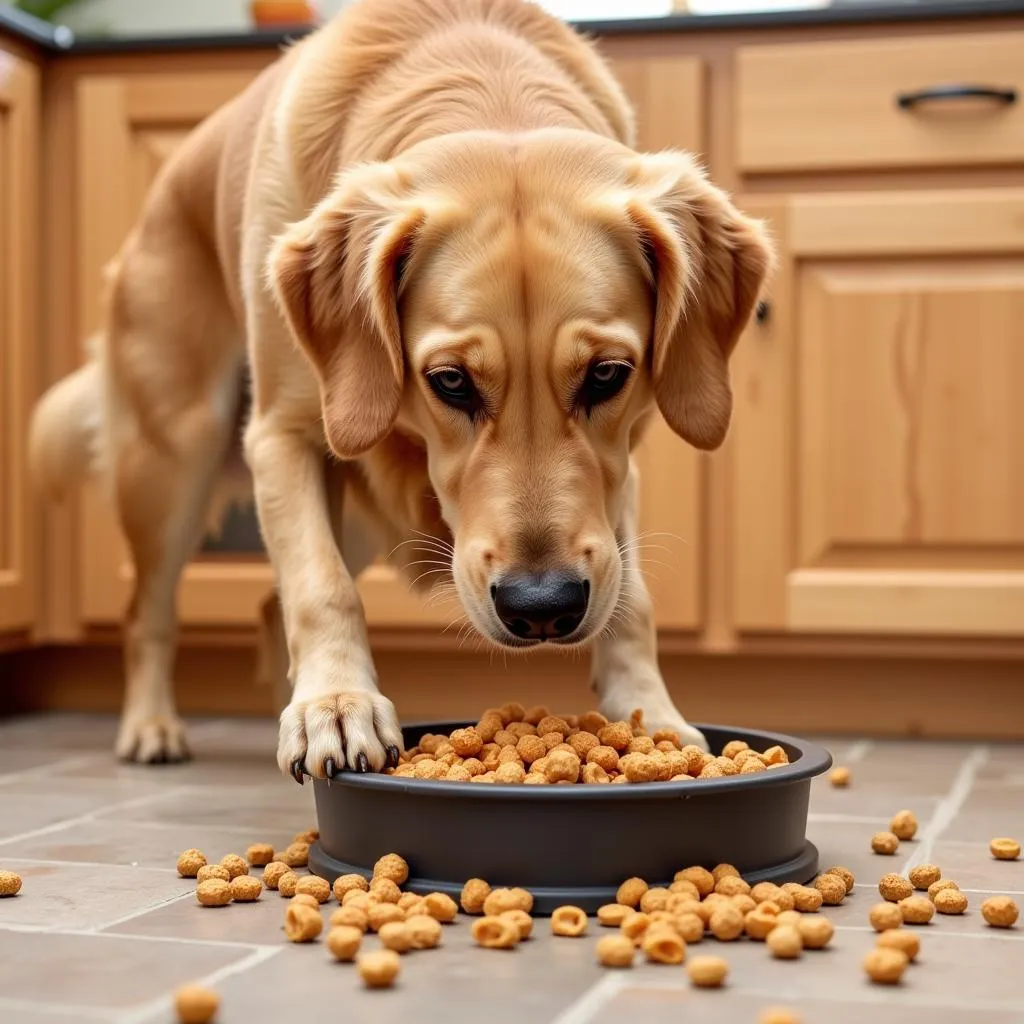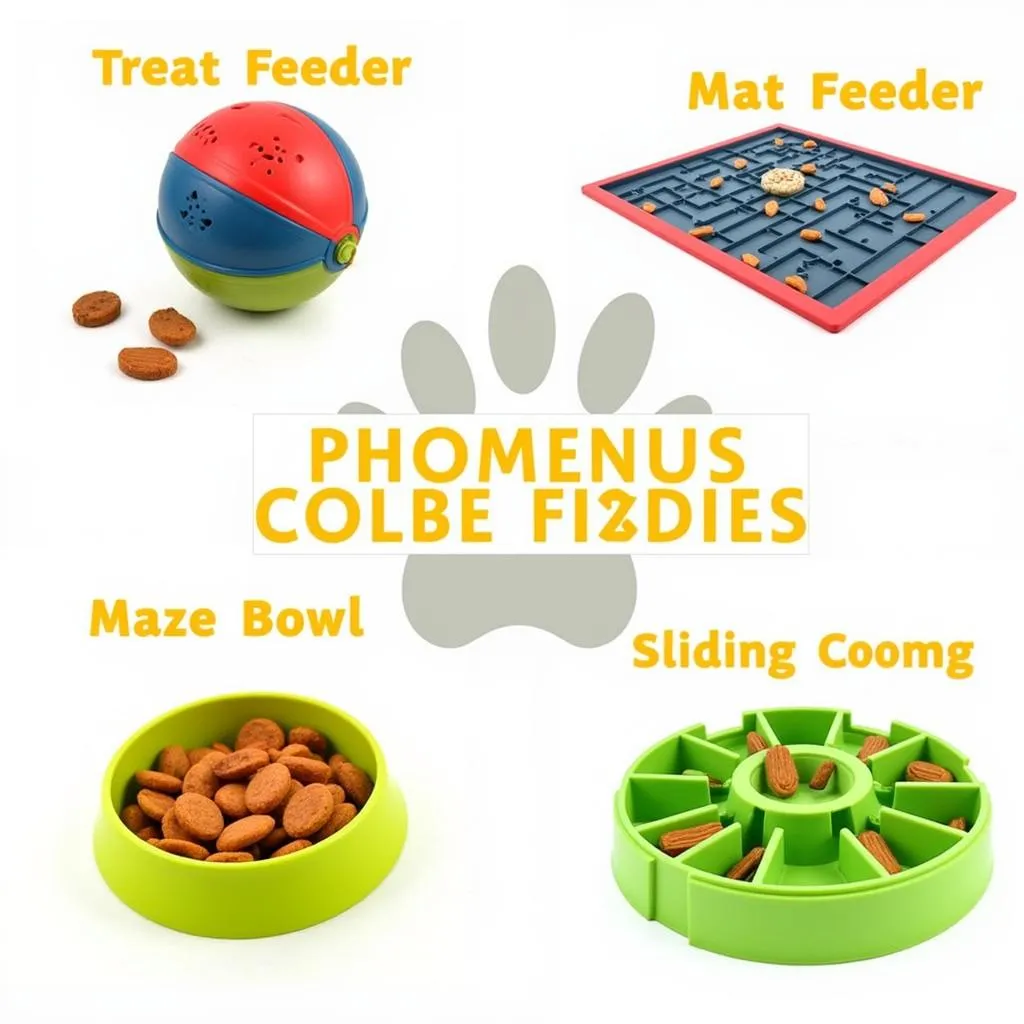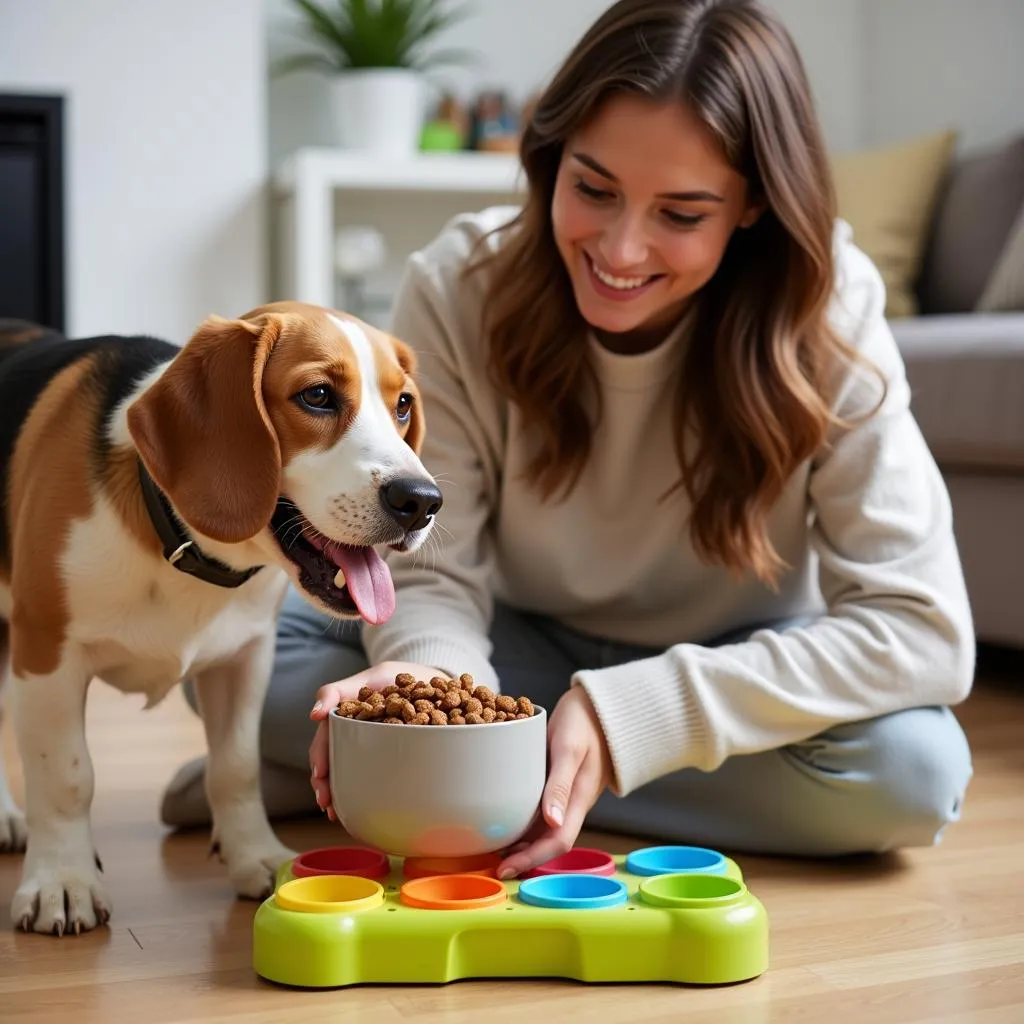Dog Food Puzzle Feeders have taken the pet world by storm, and for good reason! These innovative feeding devices offer a fun and engaging way to turn mealtime from a simple routine into a stimulating challenge for your furry friend. But with so many options available, choosing the right puzzle feeder for your canine companion can feel overwhelming. Fear not, fellow dog lovers! This comprehensive guide will dive deep into the world of dog food puzzle feeders, equipping you with everything you need to know to make the best choice for your beloved pup.
Why Ditch the Bowl and Embrace the Puzzle?
While traditional dog bowls certainly get the job done, they lack the mental stimulation that puzzle feeders provide. Imagine this: your dog, usually a whirlwind of energy, gobbling down their food in seconds flat. Sound familiar? Now, picture them engaging all their senses, strategizing, and working for their meal—that’s the magic of a puzzle feeder!
Here’s why you should consider making the switch:
- Combats Boredom: Puzzle feeders provide mental enrichment, keeping your dog entertained and engaged during mealtimes. This is especially crucial for high-energy breeds or dogs prone to boredom.
- Slows Down Eating: By presenting a challenge, puzzle feeders force dogs to eat more slowly, reducing the risk of bloating, indigestion, and vomiting.
- Promotes Weight Management: Slower eating also helps dogs feel fuller for longer, which can be beneficial for pups watching their weight.
- Stimulates Natural Instincts: Foraging for food is a natural canine behavior. Puzzle feeders tap into this instinct, providing a sense of accomplishment and satisfaction.
 Dog Using Puzzle Feeder
Dog Using Puzzle Feeder
Navigating the World of Dog Food Puzzle Feeders: Types and Benefits
The market offers a wide array of puzzle feeders, each designed with different levels of difficulty and appealing to various canine preferences. Let’s explore some popular types:
1. Interactive Treat Balls: These are a great starting point, especially for puzzle feeder newbies. Simply fill the ball with kibble or treats, and watch your dog bat it around to release the goodies.
2. Mat Feeders: Perfect for dogs who like to sniff and forage, mat feeders feature various fabric flaps and folds where you can hide food, encouraging your dog to use their nose and paws to uncover the treasure.
3. Maze Bowls: These bowls feature raised patterns and grooves that make it trickier for dogs to access their food, promoting slower eating and mental stimulation.
4. Puzzle Toys: From sliding compartments to hidden compartments, puzzle toys offer varying levels of difficulty. These are ideal for dogs who enjoy a good challenge.
5. DIY Options: Feeling crafty? Unleash your creativity and create your own puzzle feeder using items you have around the house, such as a muffin tin or a towel.
 Different Types of Puzzle Feeders
Different Types of Puzzle Feeders
Choosing the Right Puzzle Feeder: Factors to Consider
With countless options available, selecting the right puzzle feeder can feel like navigating a maze itself! Here are key factors to consider:
- Your Dog’s Size and Breed: Opt for a feeder that’s appropriately sized for your dog’s mouth and breed.
- Age and Experience Level: Start with a simple feeder for puppies or senior dogs and gradually increase the difficulty as they become more adept.
- Eating Habits: If your dog is a notorious gulper, choose a feeder that presents a greater challenge.
- Material and Durability: Select a feeder made from durable, non-toxic materials that can withstand enthusiastic chewing.
- Ease of Cleaning: Regular cleaning is crucial to prevent bacteria buildup. Choose a feeder that is dishwasher safe or easy to hand wash.
Making Mealtime Fun and Engaging: Tips for Success
- Start Slow: Introduce the puzzle feeder gradually. Begin by offering some meals in the feeder and others in a regular bowl.
- Positive Reinforcement: Encourage your dog with praise and encouragement as they learn to use the feeder.
- Adjust Difficulty: As your dog becomes more proficient, you can increase the challenge by using a more complex feeder or adding more food.
- Supervise Playtime: Always supervise your dog, especially when they are first introduced to a new feeder.
- Clean Regularly: Wash the feeder thoroughly after each use to prevent bacteria growth.
 Dog Owner with Puzzle Feeder
Dog Owner with Puzzle Feeder
Dog Food Puzzle Feeders: A Recipe for a Happier, Healthier Pup
Incorporating dog food puzzle feeders into your furry friend’s routine can be a game-changer. By providing mental stimulation, promoting slower eating, and tapping into their natural instincts, puzzle feeders offer a plethora of benefits for both physical and mental well-being. So, why not ditch the bowl and embark on a journey of fun and enriching mealtimes with the perfect puzzle feeder? Your dog will thank you for it!
Frequently Asked Questions
1. Can I use a puzzle feeder for all my dog’s meals?
While you can use a puzzle feeder for all meals, it’s generally a good idea to offer a mix of puzzle feeding and regular bowl feeding.
2. My dog seems frustrated with the puzzle feeder. What should I do?
Start with a simpler feeder and offer plenty of encouragement. If they remain frustrated, try a different type of feeder.
3. How often should I clean my dog’s puzzle feeder?
It’s best to clean the feeder after each use to prevent bacteria growth.
4. Can I use wet food in a puzzle feeder?
While some puzzle feeders are designed for wet food, it’s generally easier to use dry kibble or treats.
5. Are puzzle feeders suitable for all dogs?
Puzzle feeders can be beneficial for most dogs; however, it’s essential to choose a feeder appropriate for your dog’s size, age, and eating habits.
Need More Help With Your Pup’s Diet?
For further insights into nourishing your furry friend, check out our articles on dog food breakfast and dr. ross dog food.
Don’t hesitate to contact our dedicated team for personalized support at Phone Number: 02437655121, Email: minacones@gmail.com or visit us at 3PGH+8R9, ĐT70A, thôn Trung, Bắc Từ Liêm, Hà Nội, Việt Nam. We’re available 24/7 to assist you!